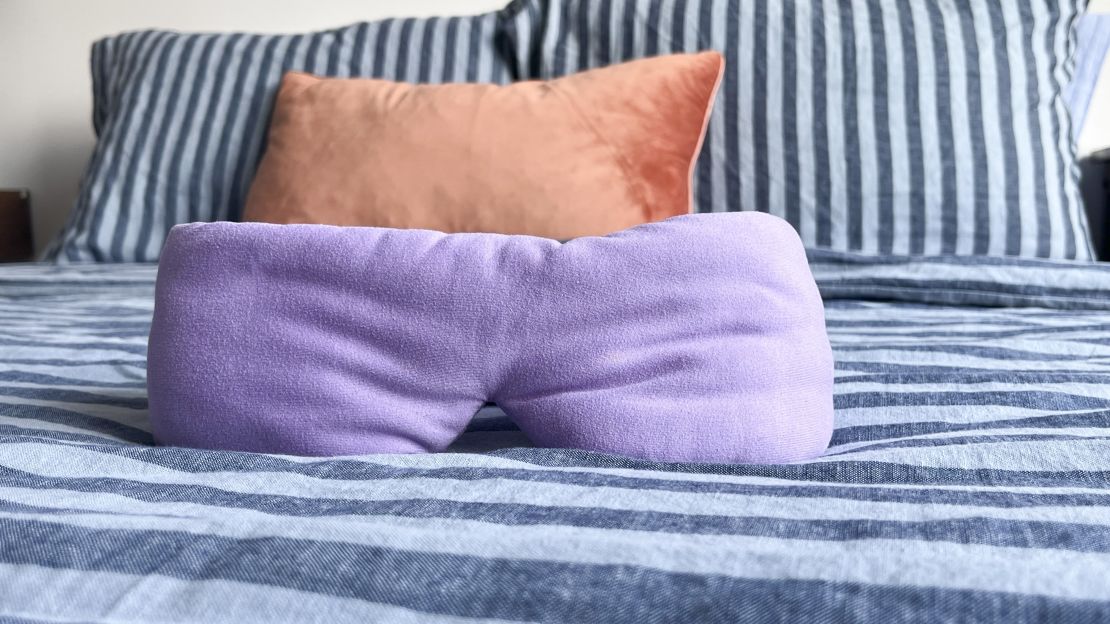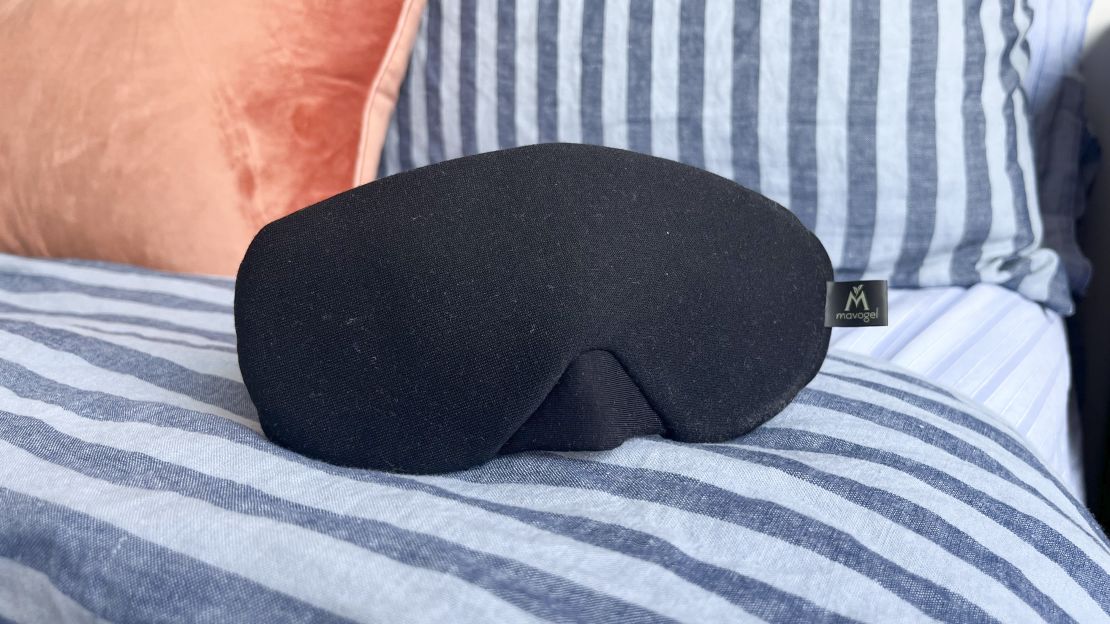This article is part of our series?Battle of the Brands, in which we compare category-leading products to their counterparts to determine which are actually worth your money.
My bedtime routine was forever changed earlier this year when I tested out a batch of sleep masks for the first time. I had never realized how much ambient light crept through my windows, keeping me stirring late at night or waking prematurely in the morning. Among the batch I tested was our longstanding best-tested pick, and my personal favorite for travel, the Mavogel Cotton Sleep Mask. But after hearing my co-workers sing the praises of weighted sleep masks, I decided it was time to see what all the hype was about. I put the Mavogel Cotton Sleep Mask head to head against the new Bearaby Weighted Eye Sleep mask to see how they compare.
Mavogel vs. Bearaby Weighted Eye Sleep Mask at a glance
Compact, comfortable and adjustable around the head and nose, it’s hard to find a sleep mask better than the Mavogel Cotton Mask for just $10. It’s perfect for sleep mask newbies looking for relief on a red-eye flight or daily mask wearers who want something lightweight to lull them to sleep.
Well constructed and well-weighted, the Bearaby Weighted Eye Sleep Mask delivers on its promise to block light and add gentle pressure around your head. It’s very comfortable to slip on, and we loved it for daytime power naps, but some sleepers might find the weight to be a bit too much for daily wear.
Quick comparison
|
Mavogel Cotton Sleep Mask
|
Bearaby Dreamer Weighted Eye Sleep Mask
|
|
|---|---|---|
| Sizes | One size |
One size |
| Material | Cotton |
Upcycled Cloudweave polyester |
| Weight | 0.7 oz. |
12 oz. |
| Colors | Black, Gray |
Gray, Blue, Lavender, Orange, Black |
Comfort and design
Both masks have a soft feel on the skin and are comfortable to wear all night. The Bearaby mask is made of an upcycled polyester material called Cloudweave, which encases the interior and exterior of the mask. It has the same type of feel your favorite worn T-shirt might have.
The Mavogel has a similar soft, cotton lining on the interior, while the exterior of the mask has a thicker, foamlike feel. Unlike the Bearaby, the Mavogel’s adjustable elastic strap isn’t covered in any other material, and while I was skeptical this might lead to more snagging of my hair as I moved, I got nothing but tangle-free results. Overall, I think the Bearaby fabric has a slightly nicer feel on the skin, but neither mask had a scratchy feel on my face.

By far the biggest differences between these two masks are their size and weight. As you might imagine, since it is a weighted mask, the Bearaby mask weighs more than the Mavogel. The weight is created from an all-natural clay material called Terraclay, which is different from the material that makes up Bearaby’s famous weighted blankets. At 0.75 pounds — or 12 ounces — the Bearaby mask is about 17 times heavier than the Mavogel model, which weighs less than one ounce. This difference is noticeable when you carry the masks and when you wear them (but more on that later).
The Bearaby mask is also longer and wider. This means you get a weighted sensation not only on your eyes but on your cheeks, temples and eyebrows too. The Mavogel covers just the eyes, upper eyebrows and upper nose, but both masks succeed in effectively blocking light from all angles.
My biggest gripe with the Bearaby mask is that, because it’s weighted, it’s much bulkier than other sleep masks I’ve tried. Both the Mavogel and Bearaby masks come with storage pouches, but while the Mavogel mask discreetly folds down to about a half-inch thick, the Bearaby mask is pretty much impossible to compress. While this isn’t an issue for home use, it does make the Bearaby mask a bit harder to travel with since it will take up more room and add more weight to any bag you stuff it in.
Fit and adjustability
Although the Bearaby mask weighs 0.75 pounds, I was impressed by how securely it stayed on my head all night. Unlike other sleep masks I’ve tried, the Bearaby mask didn’t pull at my hair as I tossed around trying to get comfortable. Having two slimmer, elastic bands instead of one thick one like other masks allowed the Bearaby mask to balance better on my face, ensuring it was secure without putting too much pressure on one area. That said, that’s the only adjustability you get, as there’s no way to tighten or loosen the straps to better fit your head. The Mavogel has both an adjustable head strap and nose bridge for blocking light.
If you’re lying flat on your back against a pillow, the fit of your mask tends to matter less since gravity is doing most of the work to keep it in place. Both the Bearaby and the Mavogel masks felt comfortable in this position. But if you’re a side sleeper, toss and turn, or want to sleep more vertically like, say, in an airplane seat, you’ll want a mask that fits your face. Since the Bearaby isn’t adjustable and it’s weighted, I had a harder time getting it to sit comfortably when sleeping on my side or sitting upright, where the mask seemed to sag downward on my face. With the Mavogel, you’ll have to dial in the head strap to what feels best for you, but once you’ve found your Goldilocks fit, you can sleep in any position hassle-free.

What they’re like to sleep with
My nights sleeping with the Bearaby mask were hit or miss; some nights everything went perfectly fine and I slept great, while other nights I felt like the weight was making my head ache after a few minutes and I had to rip the mask off. Because I move around when I sleep and the Bearaby mask doesn’t have a super-secure fit, some mornings I would wake to find the mask had moved and was doing a better job covering my forehead than my eyes. It wouldn’t be my go-to for a daily sleep mask, especially in the summer when I’m trying to reduce the bulk I sleep with.
However, I found the Bearaby mask to be an excellent napping aid. After I finished my 5:00 a.m. shift covering deals during Amazon Prime Day, I felt an afternoon nap was in order. My eyelids felt heavy, but the full afternoon sun streaming through my windows wasn’t setting my body to rest. I plopped on the Bearaby mask and was fast asleep in less than five minutes. The gentle weight and light-blocking helped ease my eyelids, which felt like they were spasming out trying to relax in so much daylight. If you’re already drowsy and craving sleep, the weight of the Bearaby mask accelerates the “falling asleep” process. Perhaps unique to me, I also don’t move when I nap and, instead, lie like a rock, so I had no issues with the Bearaby mask falling off because I never gave it a chance to shift around.
For some reason, I couldn’t replicate this amazing napping experience with the Bearaby when I wore it at night. Maybe it’s because those first few minutes in bed are spent trying to persuade my body to wind down for sleep and, at that point, the weight of the mask is just one more thing I’m asking my body to overcome. I also don’t use other weighted products, like weighted blankets, so I may?just not be accustomed to them. The Mavogel mask achieves a?“barely there” experience, which is why I still prefer it for nightly use. Nevertheless, I was still utterly impressed by the Bearaby’s ability to help knock my lights out for a quick power nap.
Bottom line
If you’re in the market for a sleep mask capable of getting the job done anytime or place, the Mavogel is the way to go. For an affordable price, it delivers the same comfort, security and performance as many more expensive sleep masks. Plus, it’s lightweight and easy to throw in a backpack or nightstand drawer.
For those who love the sensation of weighted blankets and want to take a stab at easing tension in their face, the Bearaby Dreamer Weighted Eye Sleep Mask is a worthy choice that improved my at-home power naps. Just know that it’s bulkier to wear and to store, and you might not be able to get the same snug fit that adjustable masks like the Mavogel offer.






















